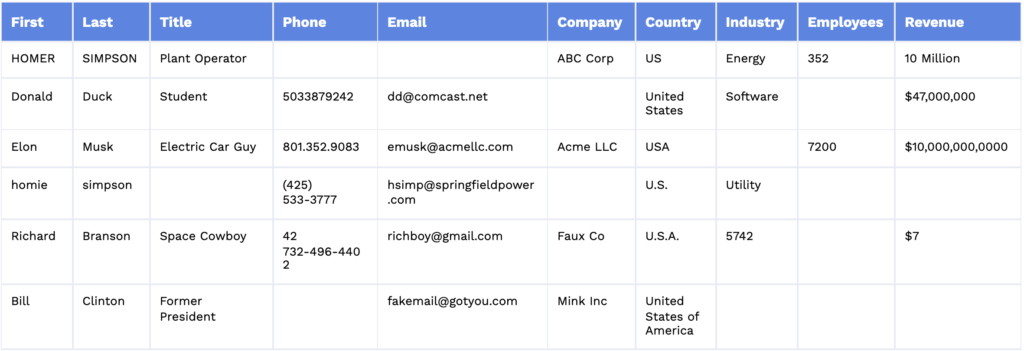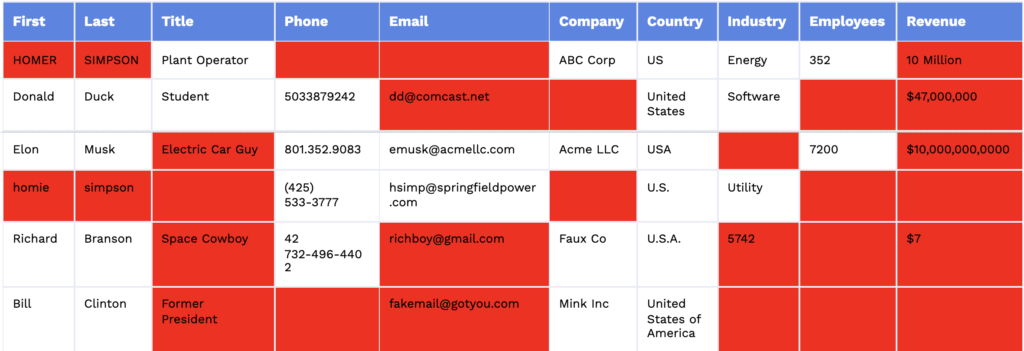As sales and marketing tech stacks grow more complex and data proliferates within them, the infrastructure is beginning to show some digital cracks.
These failure points might seem innocuous. But they can cause lead routing problems, inconsistencies within a customer relationship management (CRM) system, and most importantly, missed deals.
The good news is that new tools can shore up these cracks and prevent hidden problems from gaining a foothold in the tech stack.
Data Flows Among Tech Stack Layers
Data flows through the three layers of the sales tech stack:
Intelligence layer, where first- and third-party sources feed data into the system. This layer creates insights that feed the rest of the stack.
Orchestration layer, whichcleans and enriches data, assigns lead routing, and establishes automated workflows.
Engagement layer, where individual interactions between buyers and sellers occur.
Problems can arise as the data makes its way among the layers, largely because of data quality. If the data isn’t high-quality to start with, it can corrupt the layers and their ability to help sales and marketing reps automate their work and engage with their audiences.
Identifying Failure Points
If you have a failure point within the tech stack, chances are the root of the problem starts with the data.
With that in mind, let’s play a quick game. What’s wrong with this fictional data table? Where are the failure points?

How many lapses did you find? There are dozens, which we’ll explain, as well as provide further examples of problems to watch for.
As we identify failure points in the tech stack, we’ll loosely group them into three areas:
Inaccurate, inconsistent, or missing data
Lead-routing problems
Poor timing of contact with prospects
Inaccurate, Inconsistent, or Missing Data
Data that lacks standardization — or is just plain wrong — can start off as a small problem and keep growing. Dirty data is a long-term risk, which can lead to stale customer relationship management systems. Meanwhile, missing data leaves gaps that are hard to fill if someone, such as a sales rep, needs the information immediately.
Let’s add yellow highlights to the fields in the table that highlight inaccurate, inconsistent, or missing data.

The highlighted cells have various problems, including:
Different spellings for the same country
Duplicate records
Fake email addresses
Holes in firmographic data
Inaccurate revenue figures
Incompatible industry descriptions
Inconsistent phone number formats
Inconsistent revenue formats
Missing information in the fields
Names in all caps or all lowercase
No standard job functions or levels
Personal email instead of business email addresses
Some of these are obvious potholes when it comes to marketing and selling, such as not knowing an industry or getting a fake email address. But even seemingly small problems, such as names in all caps, can lead to record duplication or confusion if the software isn’t sophisticated enough to recognize similarities.
Lead-Routing Problems
Things get uglier when data lapses result in lead-routing difficulties, such as the same warm lead going to two sales reps. In other cases, inaccurate information may inadvertently send a prospect to the wrong team — for example, routing a lead to the small-and-medium business team instead of the enterprise team if revenue figures are off.
We put red highlights on fields that could bring routing problems.

Many of the highlighted problems are similar to the data inaccuracies listed earlier. However, in this case the failures affect a company’s ability to properly qualify a lead, send that lead to the right rep, and provide the rep with basic information to have a meaningful conversation.
A related issue: If a marketing automation platform’s data doesn’t sync with sales tech data, a qualified lead who’s contacted by a rep might not receive the correct marketing messages.
Poor Timing of Contact with Prospects
The inability for a potential customer to interact with a sales team 24 hours a day can also be a failure point.
If a prospect visits your website’s pricing page during off hours and requests a demo or tries to ask a question about the product, responding quickly can be difficult without technological assistance, such as automated chat.
Gaps in time may result in a prospect losing interest, or worse, seeking out a competitor. Research from sales engagement vendor Xant showed that if a company doesn’t respond to a demo request within five minutes, the chances of converting decrease drastically.
Tech Can Fix Failure Points
Tools are now available that can append records, automate sales routing, and initiate prospect engagement, all while interacting with your database and CRM systems.
For keeping in touch with prospects 24/7, chat platforms have come a long way. For example, ZoomInfo Chat goes beyond traditional chatbots by identifying visitors when they come to your site and constructing personalized responses based on data about the customer or company involved. ZoomInfo Chat also provides an online scheduler that lets visitors schedule meetings with a sales team directly through the chat window.
In tandem with ZoomInfo Enrich, RingLead is an example of routing software that can ensure the appropriate sales rep gets the correct leads. Together, they can determine if a record fits into a sales territory and then automatically route the lead to the right rep. Routing rules are easily adjusted with drag-and-drop features.
Problems Lurk in Your Tech Stack
Don’t let problems and gaps with data hinder your tech stack’s performance. Leaders need to recognize these lapses exist for most companies and prioritize fixing the problems. Tools exist to clean and enrich data, while also improving lead routing and chat communication.
If you need help, check out how ZoomInfo’s solutions can improve your data quality.

